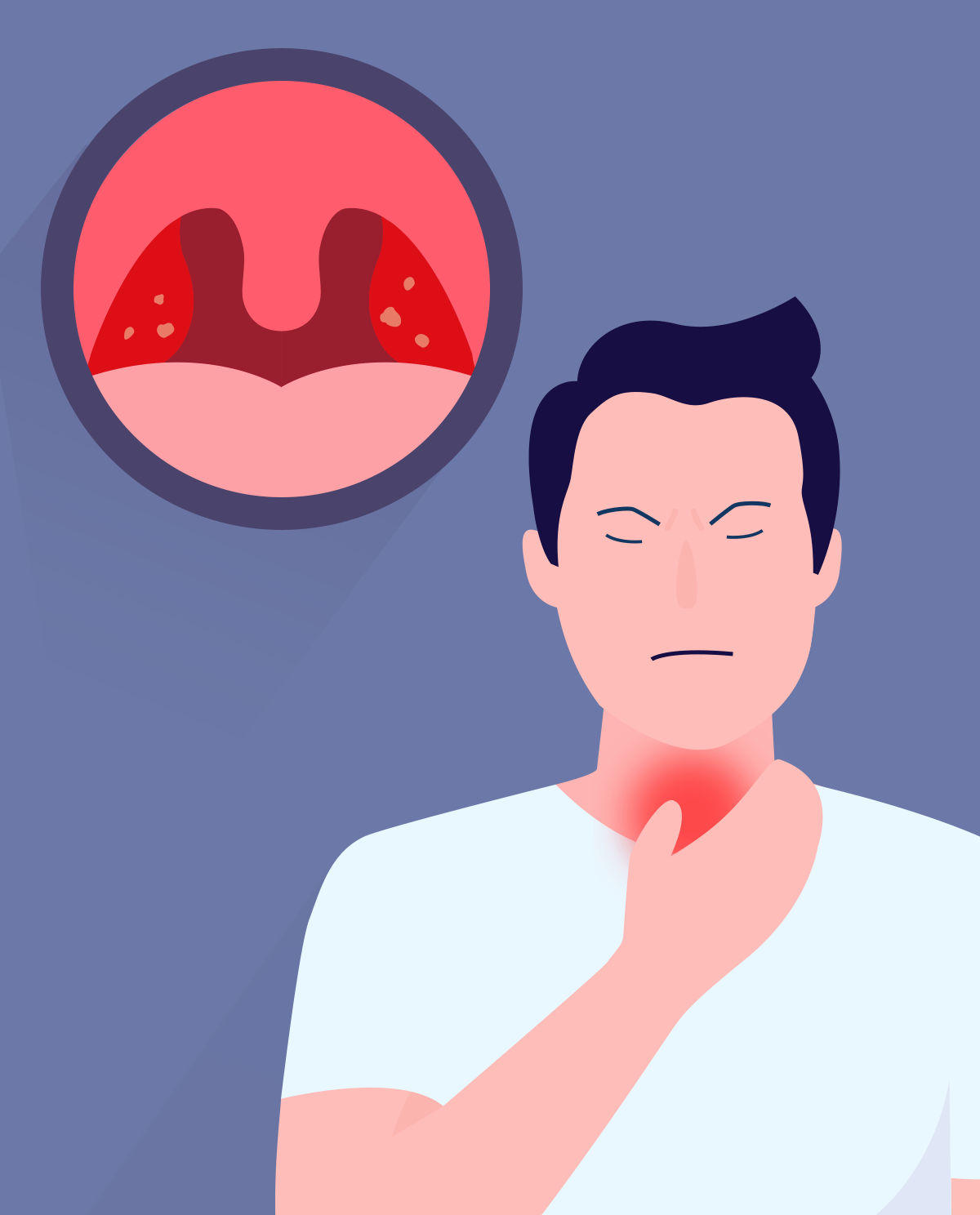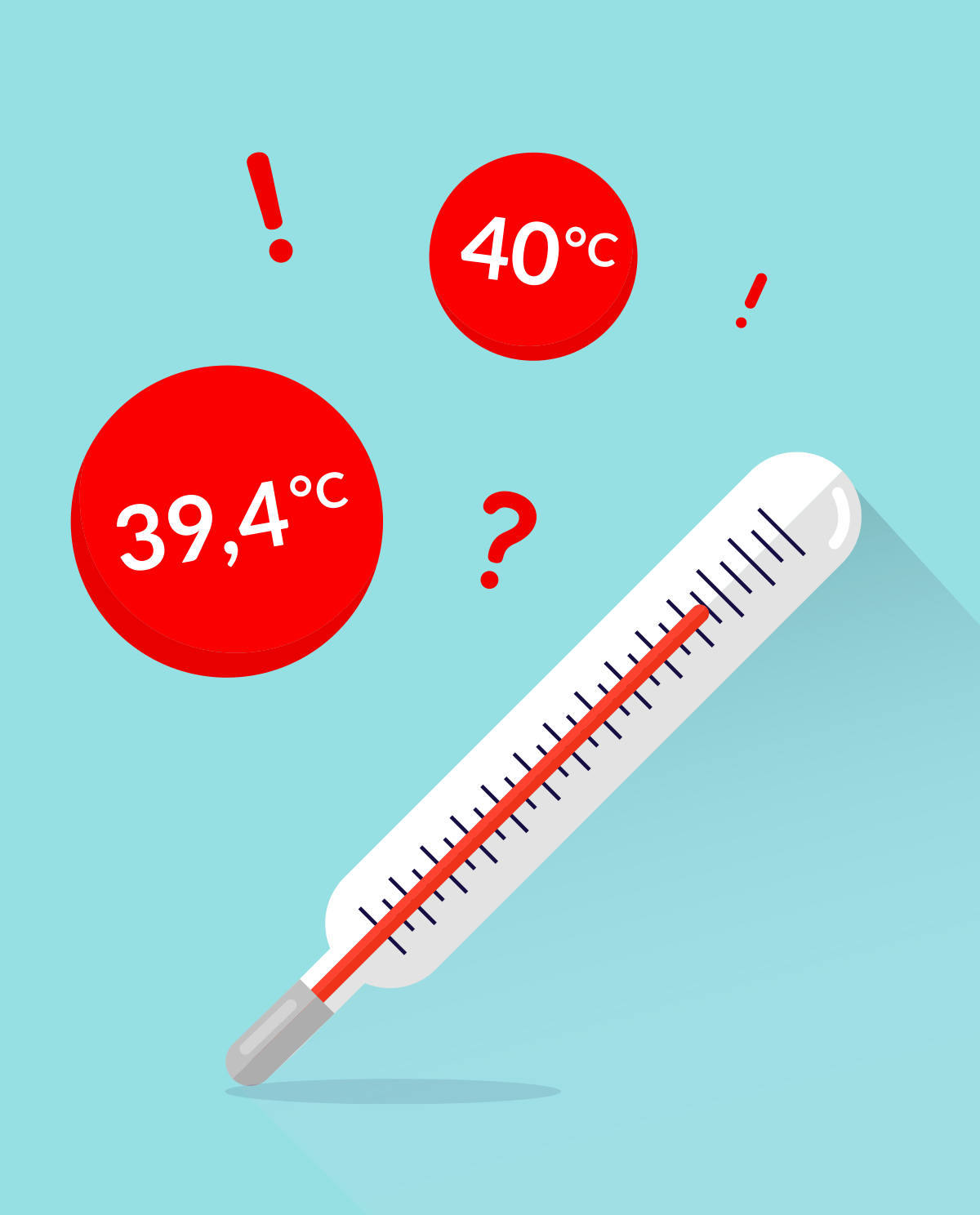- Symptoms of viral tonsillitis
- How to treat yourself in the case of viral tonsillitis?
- Signs of bacterial tonsillitis
- How is bacterial tonsillitis treated?
- How do doctors distinguish viral and bacterial tonsillitis?
- The recommended procedure depends on the sum of points collected.
- How long does it take for tonsillitis and when the patient stops infecting?
- What are the risks of untreated bacterial tonsillitis?
Tonsillitis is an acute tonsillitis of the palatine tonsils and mucous membrane caused by infection or irritation. Contrary to common opinion, this disease is most often caused by viruses, and only about 10 - 15% of angina in adults has a bacterial etiology (even less often fungal) and requires antibiotic treatment. So how do you distinguish between purulent and viral tonsillitis?
Symptoms of viral tonsillitis
Viral tonsillitis, or viral pharyngitis starts with an initial feeling of weakness, muscle and joint pain and an unpleasant scratching sensation in the throat. Over time, a moderate sore throat occurs, but it is a subjective symptom and can sometimes be particularly annoying. The throat is usually red and the palatine tonsils may be slightly enlarged, but without the bacterial streptococci characteristic of angina. With viral pharyngitis, a subfebrile fever state usually occurs (body temperature is within 36.7 - 38.0°C). Sometimes the temperature of the body is not increased at all, and fever is even less frequent (temperature above 38.0°C). Viral symptoms and a cough are very common in viral tonsillitis.
How to treat yourself in the case of viral tonsillitis?
A patient who suffers from a viral pharyngitis should be treated symptomatically. All sorts of home remedies that will help to relieve a sore throat will be perfect here. You can drink hot water with honey etc. or try a salt rinse to gargle with. It is imperative that you do not swallow a salt rinse. We recommend that you drink a lot of cold (but not ice-cold) drinks and avoid spicy foods. You can also buy lozenges, throat sprays or ready-made rinses at the pharmacy. Over-the-counter cough syrups and aerosols to reduce nasal mucosa are also available. However, the low-grade fever should not be reduced because it is a natural defensive reaction of the body. Taking paracetamol or non-steroidal anti-inflammatory drugs (i.e. ibuprofen) is recommended only in the case of particularly poor tolerance of elevated temperature or headache. Of course, the most beneficial method of dealing with this particular disease is rest, a large amount of sleep and healthy eating. Remember that antibiotics are not effective in the case of viral infections. However, the use of an antibiotic may be necessary if a bacterial infection develops as a result of viral pharyngitis, this is why it is especially important to wash your hands frequently and avoid large clusters of people.
Signs of bacterial tonsillitis
In the case of tonsillitis with bacterial etiology (most often caused by Streptococcus pyogenes), the rapid appearance of symptoms is characteristic. Inflammation is affected by both the throat and palatine tonsils, on which characteristic white or whitish-yellow deposits occur. This results in a very severe sore throat, which often hinders swallowing solid foods. In contrast to the viral pharyngitis, in the case of bacterial tonsillitis, fever is almost always present (temperature> 38 ° C), which sometimes reaches even 40 ° C and chills. There is usually no cough or runny nose. Very often, enlargement of the submandibular and cervical lymph nodes is also present.
How is bacterial tonsillitis treated?
In the case of symptoms characteristic of a bacterial infection, it is necessary to go to a general practitioner who, after examination, will prescribe an appropriate treatment. Please do not use any antibiotics unless you have been prescribed them by a doctor for this specific ailment because it is necessary to choose the right drug and dose. A poorly selected antibiotic or inadequate dose will not work and may cause side effects. In addition to the antibiotic, you should also take a probiotic, painkillers, and antipyretics (ibuprofen or paracetamol) and sore throat remedies (in the same way you might treat viral pharyngitis). Fighting fever can be aided by cold wraps on the forehead and neck, as well as proper hydration by sipping water, raspberry juice or lime tea.
How do doctors distinguish viral and bacterial tonsillitis?
Diagnosis is based on the patient's complaints and physical examination (it is necessary to look at the throat and mouth, as well as the assessment of lymph nodes). However, sometimes physicians find it difficult to make a proper diagnosis. For this purpose, it is helpful to use the Centor scale below in the McIsaac modification.
| Symptom/feature | Number of points |
|---|---|
| body temperature >38°C | 1 |
| there is no cough | 1 |
| enlarged frontal lymph nodes | 1 |
| tonsillar exudate and swelling | 1 |
| 3–14 years old | 1 |
| 15–44 years old | 0 |
| age >45 years old | -1 |
The recommended procedure depends on the sum of points collected.
Total points: 0-1
- symptomatic treatment
- bacteriological diagnosis is unnecessary
Total points: 2-3
- it is recommended to perform a "quick" test for PBHA antigen (if not available → throat swab assignment)
- decision about treatment depending on the result
Total points: 4
- severe symptoms → antibiotics are recommended;
- mild symptoms → "quick" PBHA antigen test (when not available → throat swab culture request)
- decision about treatment depending on the result
How long does it take for tonsillitis and when the patient stops infecting?
Viral inflammation:
- the period from infection to the first symptoms is 1-6 days,
- the period of infectiousness appears already 1-2 days before the onset of symptoms up to 3 weeks after (depending on the type of virus),
- approximately two-thirds of those in home contact with the patient come into contact with the patient,
- the symptoms of a viral infection usually disappear spontaneously within 3-7 days.
Bacterial inflammation (streptococcal):
- the period from getting infected to the first symptoms is usually shorter and ranges from 12 h to 4 days,
- the infectious period occurs only up to 24 h after the start of effective antibiotic therapy or about 7 days after the symptoms have stopped, when the antibiotic has not been used.
- the risk of transmission of infection to household members is around 25%.
- symptoms of bacterial infection (with PBHA etiology) usually disappear within 3-4 days (even without an antibiotic).
What are the risks of untreated bacterial tonsillitis?
In the case of viral tonsillitis, the prognosis is good, and the main complications are usually are prolonged dry cough or bacterial infection. In contrast, untreated streptococcal sore throat, although it resolves spontaneously, can lead to the development of serious complications, such as:
- Purulent complications (early) – periparous abscess, purulent cervical lymphadenitis, purulent otitis media and/or mastoiditis, purulent inflammation of the paranasal sinuses.
- Late immunological complications (very rare in adults) – rheumatic fever, acute glomerulonephritis.
- Other (very rare) – bacteremia, pneumonia, meningitis.
- In infection with etiology of F. necrophorum – Lemierre syndrome (intraocular abscess with thrombophlebitis), sepsis with abscesses in various organs.
- Interna Szczeklika 2018 Internal Diseases Handbook, Authors: Piotr Gajewski, Andrzej Szczeklik Publisher: Medycyna Praktyczna
- Inflammation of the throat and angina, December 12, 2012, Author: Bożena Skotnicka,
- Centor scale in McIsac's modification
- http://www.mp.pl
- https://www.mp.pl/pacjent/
- https://www.mp.pl/pacjent/pediatria/choroby/laryngologia/78438,zapalenie-gardla-i-angina
- https://www.mp.pl/pacjent/otolaryngologia/lista/120798,leczenie-anginy
- https://www.mp.pl/pacjent/pediatria/lista/83564,powiklania-anginy
- https://pediatria.mp.pl/choroby/laryngologia/78438,zapalenie-gardla-i-angina








